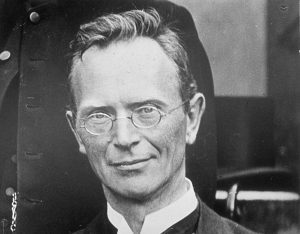The ‘Castle Document’
Published in Issue 4 (July/August 2016), Letters, Volume 24Sir,—In his timely article on the ‘Castle Document’ (HI 24.2, Mar./Apr. 2016, p.66), Joseph E.A. Connell Jr did not mention more direct evidence about its source.I have extensively researched the saga of the mysterious ‘Castle Document’ with helpful inputs from a grandson of one central figure involved.
Eugene ‘Smith’—properly Smyth—was indeed the telegraphyclerk who memorised and passed the contents of the ‘Secret Orders to Military’via a handler toSeán MacDiarmada.Thatformed the basis for the published text produced at Larkfield for Joseph Plunkett by Rory O’Connor and George Plunkett.Eugene Smyth’sBureau of Military History (BMH) statement(WS0334, 3 Jan. 1950) is consistent with his version written around 1941 at P.J. Little’s behest (referenced in Mr Connell’s article). But it addscrucial extra details. The statement is a measured and unemotional account,coldly pointing out both similarities and differences between what he found on file and what Joe Plunkett produced. He gives his opinion on what the original in the Castle actually was. (There is corroborating evidence of Eugene Smyth’s role as a War of Independence republican intelligence agent in BMH WS0568, p.42, by Eilís Bean Uí Chonnaill, née Ryan, an independent source.)
Smyth’switness statement clearly proves that Joseph Plunkett did add some ‘flourishes’ to the final version read by Ald. Tom Kelly at the Dublin Corporation meeting on 19 April 1916.But even though ‘sexed-up’, the thing must have beenbased on somereality. It was not a total invention or forgery. How could the British not have had a plan? A look at the military and police evidence to the Royal Commission of Inquiry into the Rising shows many indications ofvarious plans by police and military to deal with those viewed as dangerous nationalists or disloyal elements—well before the Rising took place.
Several other BMH witness statements point to a source in Dublin Castle (e.g. BMH WS0392& 0471), as does Geraldine Plunkett Dillon, sister of Joseph,in her memoirs All in the blood, edited byHonor Ó Brolcháin.
Current historians, e.g. Charles Townshend, now agree with Eugene Smyth’s view—the Castle Document wasprobably a contingency to be enacted if conscription was imposed in Ireland.

Above: Eoin MacNeill—his sudden U-turn on the Castle Document’s authenticity was based on Colm Ó Lochlainn’s view that it was forged. (RTÉ Stills Library)
Readers may be interested to knowthat Eugene Smyth was a younger brother of Det. Sgt Patrick Smyth, G-Division, DMP. Det. Sgt‘the Dog’ Smyth, determinedly pursuing political work against ‘Sinn Féiners’ despite being warned off, was ambushed and shot by the IRA in Drumcondra on 30 July 1919 and died of his wounds early that September.Eugene recalled to his grandson that he missed his dead brother as a source after the killing, but stayed in contact with the man’s police colleagues to gather information on security plans.
Another interesting aspect is the Smyth family’s later link to Thomas MacDonagh’s sonthrough marriage. Donagh MacDonagh (mentioned in Mr Connell’s piece)went on to wed two of Eugene Smyth’s daughters:in 1935Maura, who tragically died young in 1939,and then her younger sister Nuala in 1943.
Eugene Smyth was an excellent spy in the Castle. He was never discovered and his anonymity (at his own insistence) lasted until his death in Dublin on 11 March 1959. Ironically, this secrecywas enforced even on his son-in-law Donagh MacDonagh,who knew all about Smyth’s role when writing in 1944 (Irish Press) and1945(An Cosantór) about the document’s source (as Mr Connell mentioned)—but pointedly did not give a name.
The Castle Document itself and its use in 1916 may continue to divide opinion for another 100 years.However, I believe that Eugene Smyth, an almost unknown and overlooked figure of 1913–23, deserves belatedrecognition and wider prominence.I am glad to say that Niall MacDonagh, the grandson of both Eugene Smyth and Thomas MacDonagh, travelled from California to attend the official 1916 commemorations for relatives, and I had the pleasure of meeting him again.—Yours etc.,
DES WHITE
Dublin 7
















